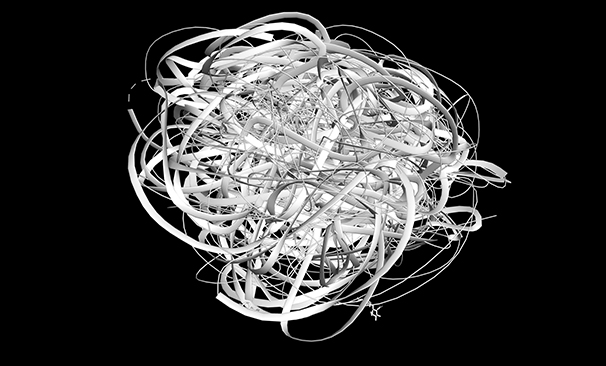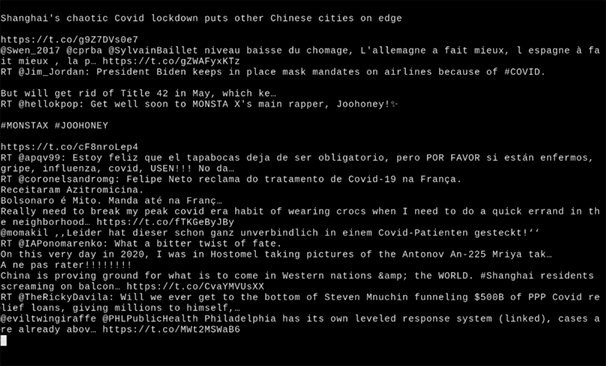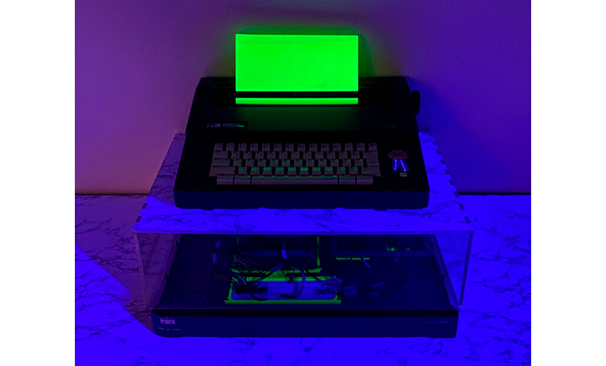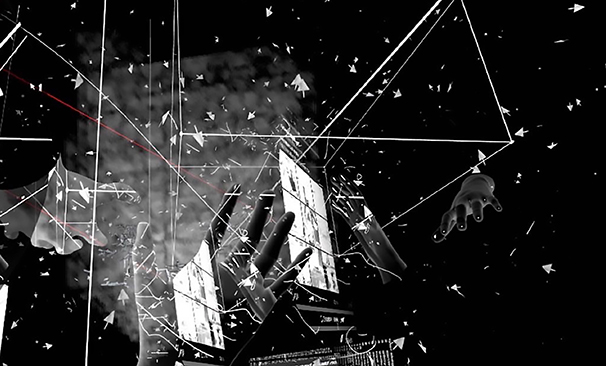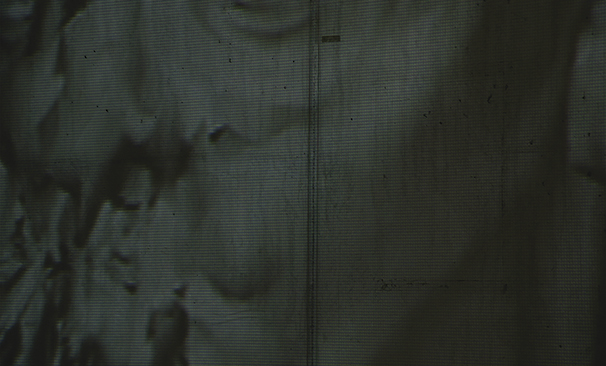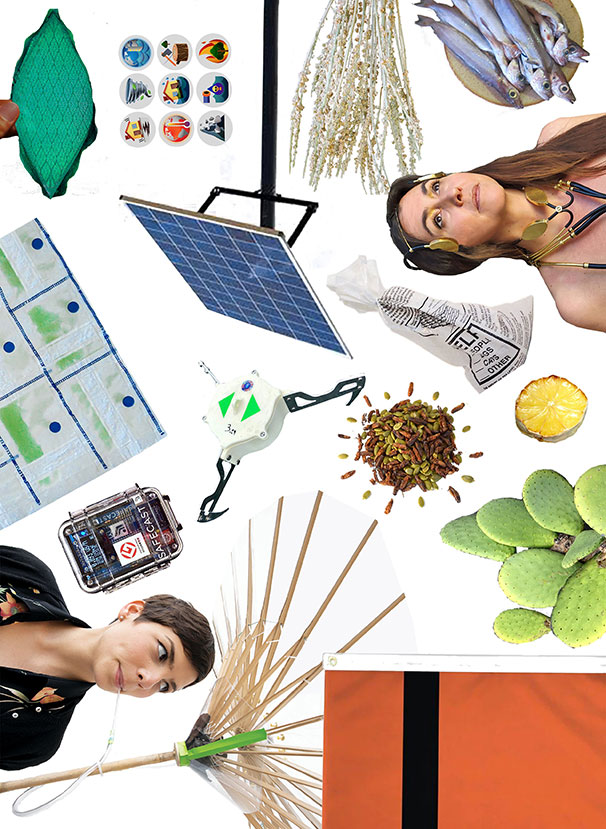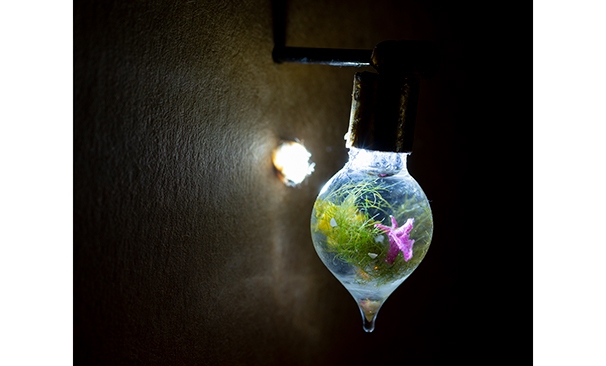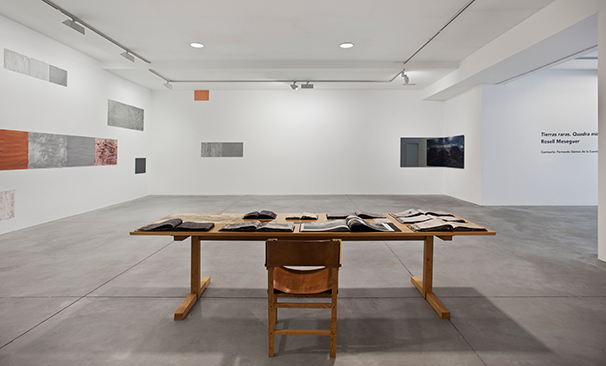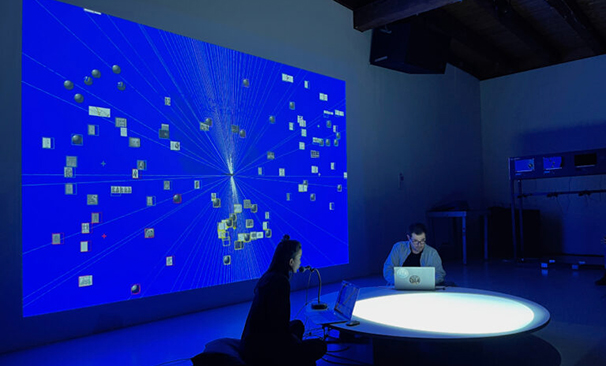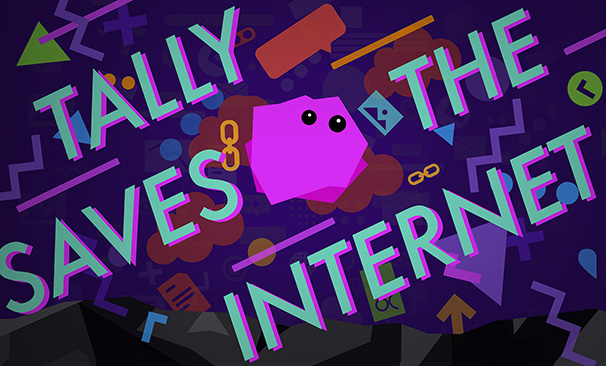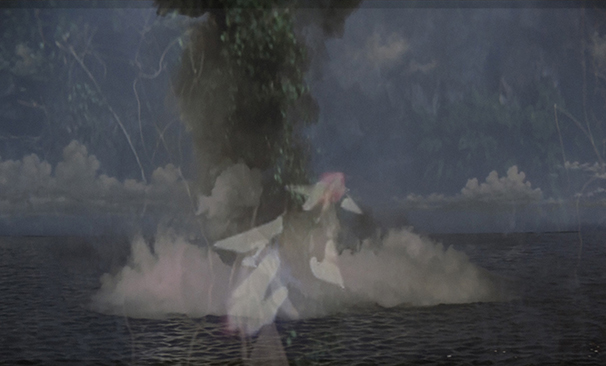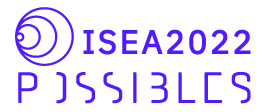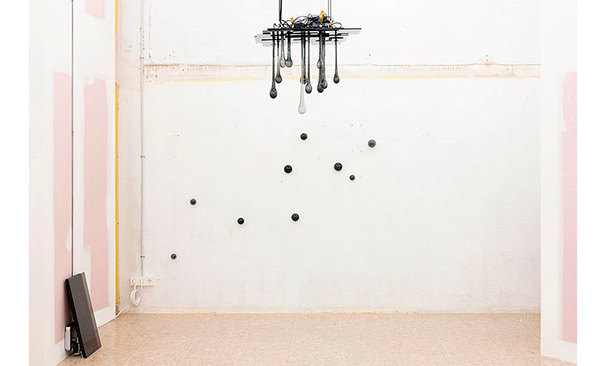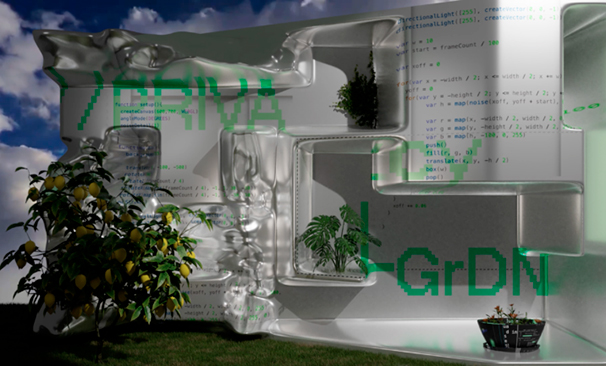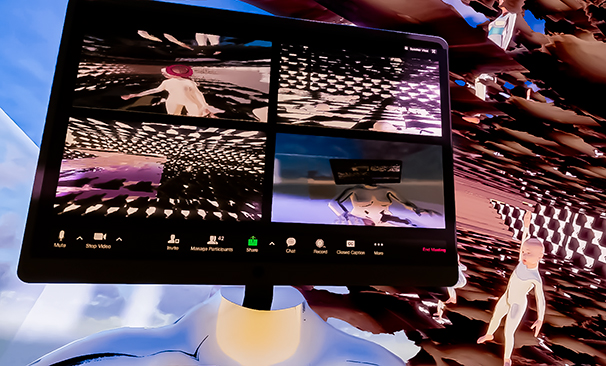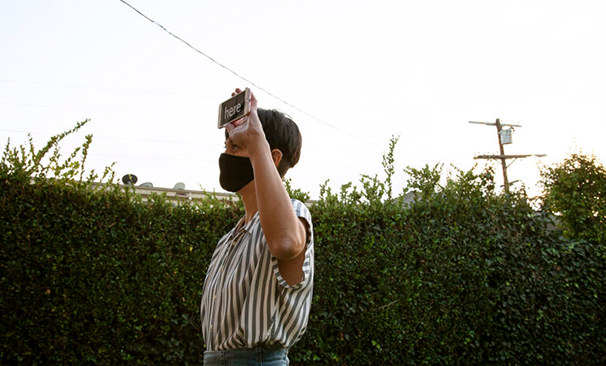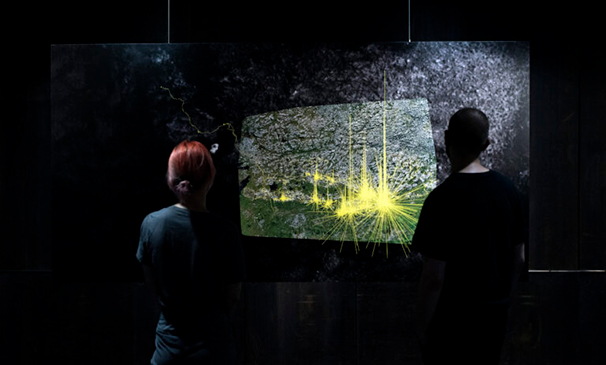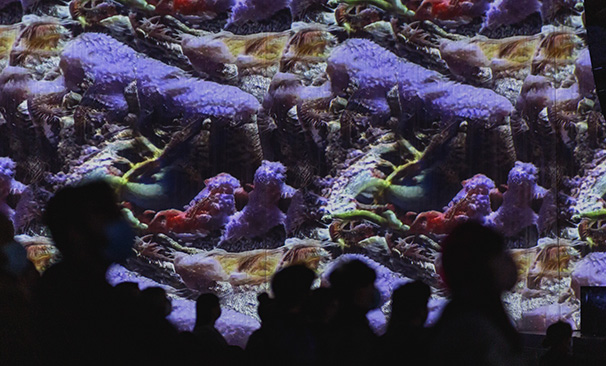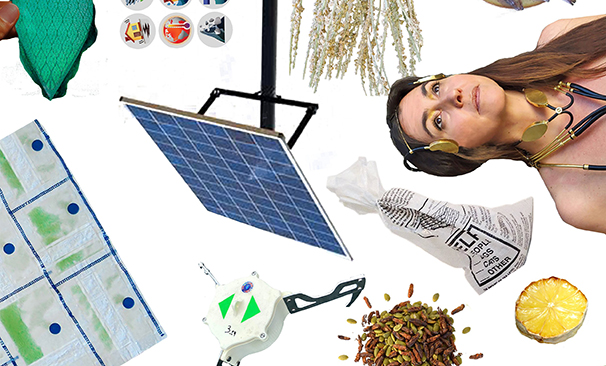What are you looking for?
You might be looking for...
Sobre monstres, fantasmes, zombis i altres éssers terrorífics
Paula Bruna and Marta Gracia Valladares
There are many fears around which our lives are organised. Sometimes we are aware of them. Many others, we are not. Some fears we can express; for others, on the other hand, we find it difficult to find the words to define them.
This itinerary proposes three routes through a selection of pieces from the exhibition, guided by three specific representations of our most common fears: ghosts, monsters and zombies. Accompanied by them, we will ask ourselves about our connection with the situation of collapse we are living through, which, although it originated a long time ago, is more terrifying than ever.
Pieces:
Joan Soler-Adillon, #See You at Home. The Domestic Spaces as Public Encounter ![]()
What does an intimate or private space mean today is one of the questions that the installation #See You at Home - The Domestic Spaces as Public Encounter invites us to reflect on. Its proposal is situated in the context of the global pandemic that we began to experience two years ago and that has justified successive confinements, under the assumption that our only guarantee of being able to maintain social interactions in a safe way was from our homes. However, many are the haunted houses that, both in literature and in film, have taken in and somatised the fears of their protagonists, and it is not uncommon for these terrors to have originated in living with one's own family. Houses are not always a safe place for everyone, even those that are called home.
Tour: Ghosts
Shona Kitchen, Other Days, Other Eyes ![]()
Looking at the images on the screen of Shona Kitchen's installation Other Days, Other Eyes opens the door to the experience of the sinister, in which the everyday is presented to us as something strange. In the sequence, archive images of landscapes, architectures, animals and common situations are shown from uncomfortable perspectives. Mixed in with these are others of the place where we find ourselves, barely registered by some of the cameras that contain the drops of dark glass that fall from the upper part of the installation. The desynchronisation between what we see in these representations and our surroundings makes it difficult for us to identify them. How can we know that these images are not a ghostly trace of our existence? Or, on the contrary, how can we be sure that we are not an illusion?
Tour: Ghosts
Erik Contreras, Opportunity in Obsolescence ![]()
One of the current fears that has always been in the background regulating our lives and their representations, but which in the era of pandemics we are living through has definitely become part of our daily lives, is the panic of not being able to survive. That is to say, the fear that the Earth will become an inhospitable and uninhabitable place for us. The paradox is that our responsibility for the ecosystemic crises to which we have brought planet Earth is inexcusable. The work of Erik Contreras urges us, precisely, to take concrete action against this situation. In his installations, the visitor-user can recognise outdated technologies recovered from electronic waste dumps that have been made functional again through repair and modification. Contreras proposes to alter the linear and single-use life of the technology we use in our daily lives, transforming us from consumers into response-able users.
Tour: Zombies
"We are the monsters and the monsters are us" is one of the premises around which Jane Mi's work Gojira is developed. The audiovisual piece is based on the elimination of all the scenes featuring monsters and humans from the 32 films about Godzilla made by the Japanese film production company Toho since 1954. With this simple gesture, the artist annuls any possibility of us identifying ourselves in opposition to a monstrous being external to us that ends up justifying our most unjustifiable actions. Instead, Mi urges us to recognise ourselves in him and to take responsibility for our terrors and the actions associated with them. It proposes the recognition of responsibility as a wake-up call to ensure that the situation that has provoked the trauma and the monsters generated by it do not return to us.
Tour: Monsters
Irma Marco, Can the Mind Exist without a Body? ![]()
Ghosts and zombies start from the assumption that mind (or consciousness, or soul) and body can be split to continue living after death; the former as souls without a body and the latter as bodies without a soul. Computation has brought us a new imaginary of the disembodied soul: human consciousness transmigrated to the virtual medium. This imaginary expresses the belief, and above all the desire, that technology will lead us to an essential enhancement of the human that will allow us to overcome all our ecological bonds. Because, once our souls are uploaded to the network, we will no longer have to deal with planetary limits, nor with the weaknesses of the body, nor even with death. But, if this technological leap is possible, will it be achieved before planetary ecological collapse?
Tour: Ghosts, zombies
Colin Ives, Vibrant Landscapes ![]()
In Vibrant Landscapes the world breaks down and crumbles before our eyes. Like romantics in the face of the sublime, we witness catastrophe with mixed feelings: on the one hand, we are fascinated by the spectacular nature of great natural phenomena; on the other, we are terrified by the reminder that, despite our pretensions, not everything is under human control. In eco-terror imaginaries, natural catastrophes are presented as a monster that rebels against humans as (almost biblical) punishment for their excesses. As in other cases, this monster reflects fundamentals of our society, such as the separation between nature and the culture we inhabit, christian guilt and punishment, and the contemporary sense of the end of the world, an apocalyptic future depicted so often that we can hardly imagine any other.
Tour: Monsters
Erich Berger, Spectral Landscapes ![]()
Berger presents the radioactive landscapes of Palkiskuro as if possessed by a spectral entity that shoots invisible rays capable of burning us from the inside. These seemingly normal but profoundly altered spaces confront us with the consequences of our own desires for power. One day a society desired an unlimited source of energy; the consequences of that desire will remain on the landscape as an unseen but manifest ghost, wandering even beyond human time. There is in radioactivity a temporal trigger that catapults us into imaginary far-off futures. Post-human, or at least post-civilisational, futures, where our societies will be reinterpreted and judged on the basis of their ruins and their ghosts.
Tour: Ghosts
Xuanyang Huang, Imaginary Sunset ![]()
Is it possible that my memories are not real? Imaginary Sunshine presents us with images of sunsets that seem recognisable to us, very similar to those experienced and probably also recorded. But these sunsets are fictitious, created by an artificial intelligence that feeds on real photographs uploaded to networks. Thus, Xuanyang's work interpellates our memories and emotions, and leads us to question the extent to which our memory is mediated by the collective imaginary and technology. And in suspecting our memory, we suspect ourselves, because if our memories are intervenable, so are we. So here technology is presented to us as a monster with manipulative potential that makes us doubt our senses. Although sometimes the image it inoculates us with is so poetic and pleasant that we may prefer it to reality.
Tour: Monsters
In our society, death is no longer interpreted as a process of generational renewal, nor as a step towards an eternal life, but as the end of the linear life of the modern subject. Silenced and hidden, old age and death appear almost as a weakness; obstacles to productivity that will soon be solved by technology. We are a society that refuses to die. However, The ends of everything ends all hope of eternity, for it reminds us not only of our own mortality, but also that of our planet, of the solar system and of the entire universe. Life is, after all, an anecdotal event in the history of the universe and everyone: humans, monsters, ghosts, zombies and other living and non-living beings; for everyone, sooner or later, there will be an end, until we reach the last of the ends, in this linear conception of life that we inhabit.
Tour: Ghosts, monsters and zombies
GHOST TOUR
Joan Soler-Adillon - #See You at Home - The Domestic Spaces as Public Encounter
Shona Kitchen - Other Days, Other Eyes
Irma Marco - Can the Mind Exist without a Body?
Erich Berger - Spectral Landscapes
Andy Gracie - EoE Triptych #1
MONSTER TOUR
Jane Mi - ゴジラ/ɡɒdˈzɪlə
Colin Ives - Vibrant Landscapes
Xuanyang Huang - Imaginary Sunshine
Andy Gracie - EoE Triptych #1
ZOMBIE TOUR
Erik Contreras - Opportunity in Obsolescence
Irma Marco - Can the Mind Exist without a Body?
Andy Gracie - EoE Triptych #1
Paula Bruna
Paula holds a PhD in Fine Arts from the University of Barcelona and a Master's degree in Ecology from the Autonomous University of Barcelona. From her double perspective as an environmentalist and artist, Paula uses artistic research as a form of knowledge where different disciplines are hybridised. In recent years, she has been researching the shaping of the Anthropocene narrative from a non-human point of view, through a combination of science, fiction and art. His hypothesis is that exploring points of view other than the current anthropocentrism has an effect on ecological awareness and opens up the range of possible ways of coexistence. He shares his research in publications, conferences, artistic residencies, exhibitions (at MEIAC, Santa Mònica, SWAB Barcelona Arte Fair and Kunstraum Lakeside, among others), and festivals (Festus Torelló, Bianyal, ExAbrupto, Encuentro Sazón, Proyector International Videoarte Festival...). His work has been supported by several grants for artistic research (Barcelona CREA 2022, OSIC Generalitat de Catalunya 2020, La Escocesa 2019, Guasch-Coranty, 2018-19). She is currently artist-in-residence at the creative factory La Escocesa.
Marta Gracia Valladares
She is currently working on the conceptualisation and coordination of exhibition programmes and artistic mediation for artistic and cultural institutions. She also works as a collaborating lecturer on the Degree in Animation, Design and Digital Arts at the Polytechnic University of Catalonia. Between 2011 and 2020 she coordinates the artistic research area of Hangar, Barcelona, where she is also in charge of the implementation of this new strategic line of the centre. In 2009 she carried out the first research on artist-in-residence programmes in Spain, with the support of a grant from the Consejo Nacional de la Cultura y de las Artes (National Council for Culture and the Arts). In 2010 he co-founded the research and information platform on artist residencies in Spain, Arte Motile, which he headed until 2016. Between 2006 and 2007 she coordinated the project CIDEA - Centre for Innovation and Economic Development of the Arts of the Association of Visual Artists of Catalonia. She has done residency and training stays in England, Italy, Albania and Japan.
Visit continues: https://santamonica.builders/isea/monstres
Other itineraries you can do:
- (Un)wanted Spacetimes, Daphne Dragona and Jara Rocha ![]()
- A counter-catastrophic gaze, Joan Yago and Enric Puig ![]()
- Technologies for the celebration of multiple ends, Paz Peña O. ![]()
- States of emergency: art in times of pandemic, Israel Rodríguez Giralt ![]()
- An enemy like the future, Ian Alan Paul ![]()
- Group Contraimaginarios Postpandémicos ![]()
